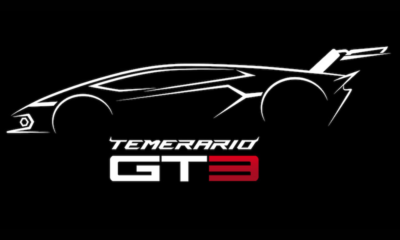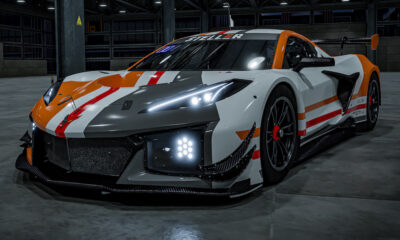
Photo: Nissan
Nissan is remaining tight-lipped on its plans for a new or updated GT3 model as it focuses its development efforts on the Z NISMO GT4.
The Japanese manufacturer’s second-generation GT-R NISMO GT3 is among the older GT3 models still in service, having last undergone a major refresh in 2018, but is now rarely seen outside of Nissan’s home market.
Four examples of the car run in SUPER GT’s GT300 class, most notably the title-winning Kondo Racing car (pictured top), while a single GT-R each runs in Fanatec GT World Challenge Asia powered by AWS and Super Taikyu’s top ST-X category.
The GT-R NISMO GT3 was given a minor update in 2020 and is homologated until 2030.
Discussing the status of Nissan’s customer racing efforts, NMC senior vice-president Shinichi Kiga said the brand is keen to ensure the GT-R NISMO GT3’s ongoing competitiveness but admitted its development efforts are primarily focused on GT4.
“We see GT300 as customer racing, so that means selling cars to customers and letting them race,” Kiga told Sportscar365. “And also now we are really focused on the development of the Z GT4.
“It’s not true that we are not doing anything this season [with GT3]. There hasn’t been any [significant] trouble, but we have some mechanical issues, so we want to fix those.
“We’re in a slightly difficult position with the Balance of Performance, so we want to proceed carefully and ensure that we are not at a disadvantage.”
Asked about plans for a new GT3 model, Kiga replied: “We do not have anything to announce right now, and we are exploring some specific possibilities.”
Nissan made a successful entry into the GT4 market with the Z GT4 in 2023, and brought in the updated Z NISMO GT4 at the start of this season.
The program scored its first class win earlier this year in Pirelli GT4 America at Sebring and has also had ST-X class podium finishes in Super Taikyu.
Kiga hopes Nissan is able to expand its efforts in both North America and Japan in future, and didn’t discount the prospect of the Z NISMO GT4 racing in Europe despite the fact the equivalent street model is not sold there.
“We have four GT4 cars running in the U.S. and three in Japan, and we want to expand our customer base going forward,” said Kiga.
“We don’t sell the Z [road car] in Europe, but running the car would still be good for the brand’s image. So if there is a willing customer, it’s not like we wouldn’t consider it at all.
“Personally, I would like to see cars running in the Nürburgring 24 Hours. But it’s easy to just sell a car; we have to support our customers in order for them to be able to win.”
The lower costs of GT4 machinery compared to GT3 is partly behind Nissan’s shift in focus towards the former category, admitted Kiga, as is Nissan’s desire to promote the newer model in its street car range.
“Indeed, GT4 cars are more attainable for our customers [than GT3],” he said. “But the most difficult thing is that the scope for modifications is very limited.
“The potential of the base car must be fully enhanced. Our racing experience is important in determining how to do that, so if we can use that to our advantage, we believe we can make a car capable of winning, so that’s why we started.”
While a variant of the Z races in SUPER GT’s GT300 class with the Gainer team, built to GTA-GT300 rules, this is a private effort with no direct Nissan involvement.























